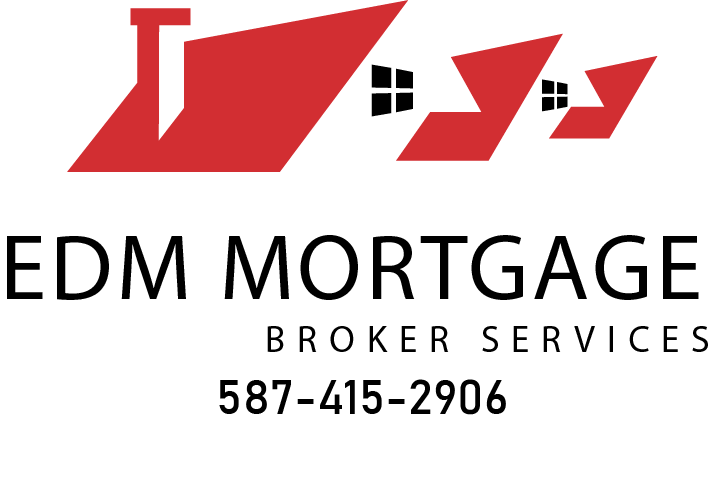Your Guide to Mortgage Refinancing in Canada
Mortgage Re-financing is a simple yet efficient method implemented by individuals to save hundreds to thousands of dollars in mortgage interest by minimizing the monthly payments. Refinancing mortgage can be done either with the existing lender or a new lender, depending on the market rate and trend. There are three main reasons one might consider mortgage refinancing: debt consolidation, lowering interest rates, and equity access in the property. On the downside of things, refinancing your mortgage will cost you a lot in terms of the prepayment penalty charges. Mind you, some lenders charge a hefty penalty, ending up being a burden for the property owner, so consider all the risk factors and then step in. We shall discuss all the mortgage re-financing factors in this article for your reference.
Are you looking for a FREE Mortgage Refinancing consult?
Mortgage Broker Simple Form
We will get back to you as soon as possible.
Please try again later.
Mortgage Re-financing
In simple terms, refinancing your mortgage is nothing but taking a new mortgage on your existing property. This new mortgage will close the current mortgage payment and start a new one afresh. Some of the critical options associated with refinancing are interest rates, term period, monthly payment structure, and loan amount. The interest rate can either be flexible or fixed, depending on the lender and the financial situation and affordability of the individual.
Re-financing Basics
The first step involved in refinancing the mortgage is determining the value of your home. The lender or expert should evaluate the home's current market value you are planning the refinancing. In most cases, the refinanced mortgage amount would be 80% of the property's market value. This particular sanctioned amount minus the existing mortgage repayment would be the resulting amount of the refinanced mortgage. The property owner can then use the equity amount left after this calculation for renovation purposes or even clearing out other debts.
Re-financing - Detailed Analysis
To refinance your mortgage, you need to follow specific steps without fail, and those are the ones we are going to discuss in this section. All the particulars discussed below are for the mortgage re-financing rules and regulations framed by the concerned authorities in Canada. For better understanding, make sure to read through every single one of these procedures.
Refinancing - A Detailed Analysis
Data collection - You need to possess data on all the financial activities performed in the financial year and the years before. Data corresponding to the current property value, current mortgage amount, annual income, credit score, etc., is also mandatory. Here is a list of different variables.
- Lender Discussion - When you plan to refinance your mortgage, make sure to discuss the whole process of refinancing with your existing lender or others who offer the same. This should provide helpful information regarding the entire refinancing procedure to the property owner.
- Application - A mortgage application needs to be filled with all the financial data we brushed upon earlier. Make sure to fill the application accurately, and one should be ready to face questions from the lender or broker regarding all the information mentioned in the application. You could even secure some expert advice to ensure that your goals align with the lender's interests, thereby helping smoothen the mortgage re-financing process.
- Pre-Approval Status - Once the application is successfully submitted with the lender or broker, the bank or the concerned authorities will provide a pre-approval mortgage quote. This will contain all the amount approved, interest rate, term, etc. If both parties are satisfied with the pace, time, and mortgage amount on offer, they can further be refinancing the mortgage.
- Full Mortgage Approval - If the individual applying for refinancing is happy with the terms of the pre-approval quote, then the broker or the lender would proceed further and sanction for full mortgage approval.
- Onboarding Queries - The process of refinancing a mortgage is not over yet. The lender would then ask for any queries the borrower might have on the whole process, terms, etc. Only when both parties are clear with all the refinancing agreement aspects shall we move on to the final agreement signature.
- Finalization - In this particular step, all the borrower's financial documents, property papers, etc., would be verified and brought to the agreement. Some records include property tax info, annual income info, employment particulars, etc. Few banks might even ask for an appraisal, which should be completed. Once the documentation is complete, the mortgage agreement is finalized, signed, and approved.
- Mortgage Payment Dispersal - During this process, the old loan is completed closed and the new mortgage is refinanced. In this case, all the payments in the previous mortgage would be complete and handled by a legal expert, like a lawyer. As discussed in the agreement, additional refinance payments to the borrower would be dispersed to the borrower via wire transfer or cheque. This particular payment will also be handled by legal authorities assigned to the whole mortgage refinancing process.
- Regular Lender Communication - Once the agreement signature process is complete, most borrowers seldom talk to their lenders or brokers, which is not the right approach. With time, the interest rates, regulations, financial status, terms and conditions of the mortgage, etc., will change, and to make sure that one doesn't miss out on the best offers, constant communication with the bank is a must.
- Some might find these steps to be a bit complicated, but they will become manageable once you start applying. For those who don't have the time to handle everything, there are a lot of reliable mortgage brokers who could guide you through the refinancing process quickly and efficiently.
Bottom Line
Mortgage re-financing is an excellent solution for lowering debts, lowering interest rates, and is a treat for property owners looking to renovate their homes. A line of credit might be a better option for some users when compared to refinancing. Refinancing is a better option for sure, but that doesn't make it the best pick for every property owner in Canada. Careful analysis of the market rate, term, trends, and current property value plays a crucial role in deciding whether the mortgage re-financing is good or bad for the borrower.
Get a FREE Re-financing Consult - Send us your information today!
Book today to get an application in
Mortgage Broker Simple Form
We will get back to you as soon as possible.
Please try again later.
"I was impressed by how the team at Alpha Mortgage Brokering Services handled my mortgage application. They took the time to explain every step of the approval process, ensuring I understood my options. Thanks to their help, I was approved for a great rate on my home refinance. I couldn't be happier!"
— Emily R., Marketing Manager
6 months ago
"Securing my first mortgage felt overwhelming until I met with Alpha Mortgage Brokering Services. They guided me through the pre-approval process with patience and clarity, answering all my questions and making sure I felt confident. Their support was invaluable in getting my home loan approved."
— John D., IT Specialist
3 months ago
"Alpha Mortgage Brokering Services was fantastic in assisting with my investment property mortgage. They took the time to discuss all the details with me, from initial consultation to final approval. Their expertise and thorough approach helped me secure financing that was just right for my needs."
— Lisa M., Real Estate Investor
2 months ago
"The team at Alpha Mortgage Brokering Services made the mortgage process straightforward and stress-free. They were always available to discuss options and provide updates throughout the pre-approval process. Their professionalism and dedication helped me secure my mortgage smoothly."
— Michael S., Business Owner
16 months ago
Interesting Topics Involving the Mortgage Industry & Edmonton
As experts in the Edmonton mortgage industry, we’re passionate about sharing our knowledge. Here are some topics we think you’ll find interesting.
Unpacking the Edmonton Real Estate Market: A Guide for First-Time Home Buyers
Buying your first home in Edmonton can be daunting, but understanding the local real estate market can make the process easier. We’ll break down the key trends and provide tips for first-time buyers.
How the Edmonton Housing Market Impacts Your Mortgage
The state of the Edmonton housing market can have a significant impact on your mortgage options. We’ll explore how market conditions affect interest rates, home prices, and your ability to secure a mortgage.
Understanding Mortgages: A Necessity for Every Edmonton Resident
Mortgages are a critical component of homeownership in Edmonton. We’ll provide an overview of the different types of mortgages available and offer advice on choosing the right one for your needs.
Local Mortgage Broker Topics
Our Mortgages to the Edmonton Community
At Alpha Mortgage Broker Services, we believe in giving back to the community that has supported us for so many years. Here’s how we’re involved in making Edmonton a better place to live.
Supporting Local Homeowners Association Events
We’re proud to sponsor and participate in local homeowners association events throughout Edmonton. These events help build stronger communities and provide valuable resources to residents.
Our Role in Edmonton’s Fair Housing Initiative
We’re committed to promoting fair housing in Edmonton. Through our involvement in local initiatives, we work to ensure that everyone has access to safe and affordable housing.
Contributions to Local Housing
Charities
Giving back is an essential part of our mission. We regularly contribute to local housing charities that provide support to families in need throughout Edmonton.
Visit us at 6817 104 Street NW, 2nd Floor, Unit 3, Edmonton, AB T6H 2L7. We’re conveniently located to serve clients throughout Edmonton.
Free Consult for Mortgage Applications over the phone within 24 hours, to book an appointment for this week.

Mortgage Broker Simple Form
We will get back to you as soon as possible.
Please try again later.

Alpha Mortgage Brokering Services is your trusted partner in navigating the mortgage process. Our commitment to personalized service and deep local knowledge sets us apart as a leading mortgage broker in Alberta. Let us help you achieve your home financing goals with confidence.
Pages
Area Served
- Edmonton
- Calgary
- Red Deer
- Lethbridge
- St. Albert
- Grande Prairie
- Medicine Hat
- Airdrie
- Spruce Grove
- Fort McMurray
- Canmore
- Cold Lake
- Jasper
- Leduc
- Hinton
This page should not be taken as advice, please email or call in to the licensed mortgage brokerage and make and an appointment before making any decisions.


